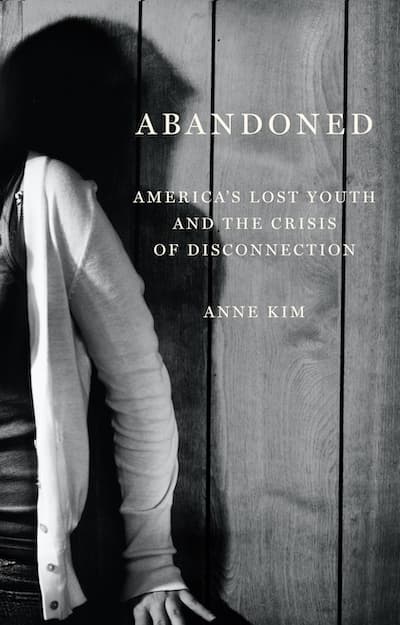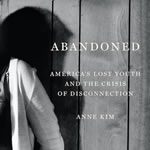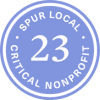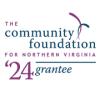 Anne Kim is a Northern VA based writer, focusing on some of the issues at the core of our work – things like poverty and opportunity. Her new book, Abandoned: America’s Lost Youth and the Crisis of Disconnection comes out on February 11th, 2020. She has an entire chapter dedicated to Second Story and how our work is helping address this crucial challenge, plus she spoke with a graduate from our programs, Carla, to make the crisis of “disconnected youth” more personal. Her book is an excellent way to really understand some of the big issues Second Story seeks to address. Anne stopped by to drop off a brand new copy of her book for and she shared a bit more about her book.
Anne Kim is a Northern VA based writer, focusing on some of the issues at the core of our work – things like poverty and opportunity. Her new book, Abandoned: America’s Lost Youth and the Crisis of Disconnection comes out on February 11th, 2020. She has an entire chapter dedicated to Second Story and how our work is helping address this crucial challenge, plus she spoke with a graduate from our programs, Carla, to make the crisis of “disconnected youth” more personal. Her book is an excellent way to really understand some of the big issues Second Story seeks to address. Anne stopped by to drop off a brand new copy of her book for and she shared a bit more about her book.
 Can you tell us a little bit about your book?
Can you tell us a little bit about your book?
This book is about what I think is a hidden crisis among young adults in America – as many as 4.5 million young adults between the ages of 16 and 24 have dropped out of the economic mainstream and are neither in school nor working. That’s a pretty shocking 11.5 percent of all young adults. My book explores why this has happened, why this is a problem, and what we can do about it.
One thing I’d like people who read this book to come away with is an understanding of who these disconnected young people are. Some of them might fit the stereotype of someone who’s “failed to launch” and living in their parents’ basement, but many of them are – as the title of the book says – “abandoned” and left adrift without the right opportunities and support to make it on their own. Some live in what I call “opportunity deserts” – places with substandard schools and no jobs nearby – but some are also living right here in northern Virginia, the victims of domestic violence, homelessness or other circumstances beyond their control.
A second takeaway is that young adulthood is now an incredibly important developmental period in someone’s life – but one that hasn’t gotten much attention or investment from public policy. I think middle and upper-middle-class parents have come to realize that the runway to adulthood has gotten a lot longer in recent decades. A lot of young people are depending on their parents for a longer period of time – they’re in school longer; it’s taking more time to get established in careers; high housing prices means it’s cheaper to live at home even after you get that first job. But what if you don’t have access to that kind of support? A lot of our public policies were put into place when “young adulthood” as a phenomenon didn’t exist. Public school ends with high school graduation, and many public programs end at age 18. Especially vulnerable are young people who “age out” of foster care at age 18 – they literally lose all support the day after their birthdays – or young people who are incarcerated and spend critical time when they should be in school or getting a first job behind bars.
As you well know at Second Story, there are far too few resources dedicated to ending youth homelessness, and a big part of the problem is that the federal government doesn’t define “homelessness” in a way that captures how most young people experience homelessness. Young people without stable housing tend to “couch surf” – staying with friends or family – but that’s not considered true “homelessness” according to the government. As a result, young people fall to the bottom of the priority list for shelter. And the amount we spend to assist “transitional housing” programs such as Second Story is miniscule in comparison to the need and in comparison to what we spend on other programs.
What encouraged you to write it?
Most of my writing over the years has been about poverty, social policy and who has economic opportunity and who does not. I’ve lately become very interested in the structural forces behind persistent poverty, and it’s clear to me that these structural forces are particularly damaging to the prospects of young people. It’s also been clear to me that our educational system – including higher education – hasn’t been doing a good job of connecting young people to work. As a nation, we’ve also consistently underinvested in young people, which is just incredibly shortsighted. I was fortunate that AECF’s interest in supporting a book project on disconnection coincided with my interest in these topics.
I’m grateful to the Annie E. Casey Foundation (AECF) and my publisher, the New Press, for supporting this book. Policies to support children and youth have been a longtime priority for AECF, and this book is an effort to bring the crisis of youth disconnection – which is not a new problem, by the way – into mainstream public awareness.
What do you think people most misunderstand about disconnected and opportunity youth, especially in the Northern Virginia area?
I think it’s inconceivable to many people that an area as affluent as Northern Virginia can have pockets of extreme distress, disconnection and homelessness. And as excellent as the schools in Fairfax County can be, there’s a lot more that every school can do to ensure that students learn about and are connected to more opportunities for work experience. One of the things I write about in the book is the value of early work experience, especially internships. Access to internships is a huge advantage that middle-class and upper-middle-class young adults have over their lower-income peers.
What is the best thing members of our community can do for disconnected and opportunity youth?
Supporting local organizations such as Second Story is one very important thing that people can do! There are so many unsung organizations and advocates out there doing great work with young people, which is why a third of the book is dedicated to profiling some of these efforts. We know what works to reach disconnected young people or to help them stay connected to work and to school – we’re just not investing enough in these programs. The cost of disconnection is very high. Disconnected young people become disconnected adults, which means we’re not collecting tax dollars from the income they could be earning and in fact could be spending tax dollars on public programs, when that could have been avoided.
I know our political climate is highly polarized right now, but I also think that the issue of creating more economic opportunities for young people is something that both parties can and should agree on. If citizens of all political persuasions tell their members of Congress the same, maybe we can make some progress.






